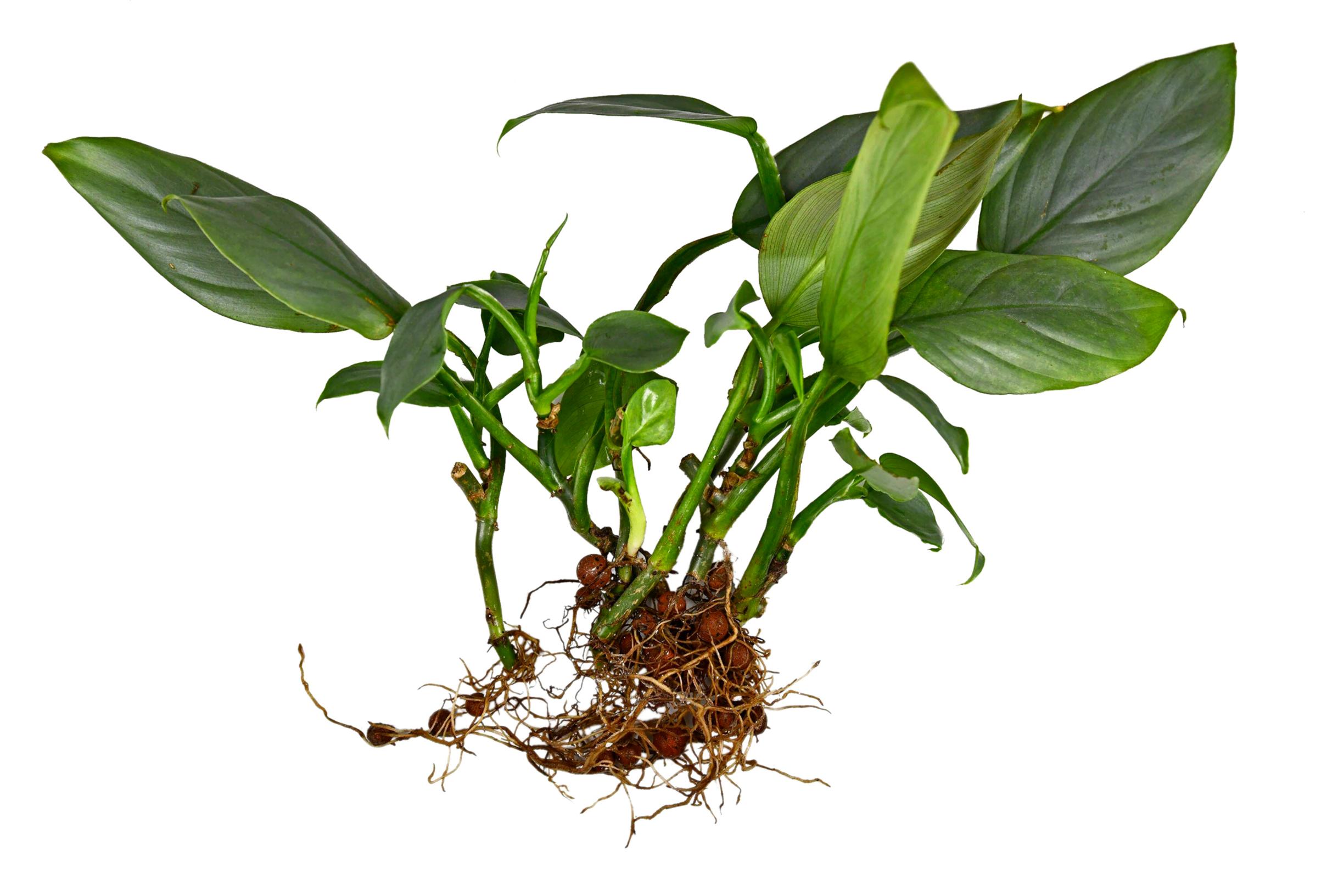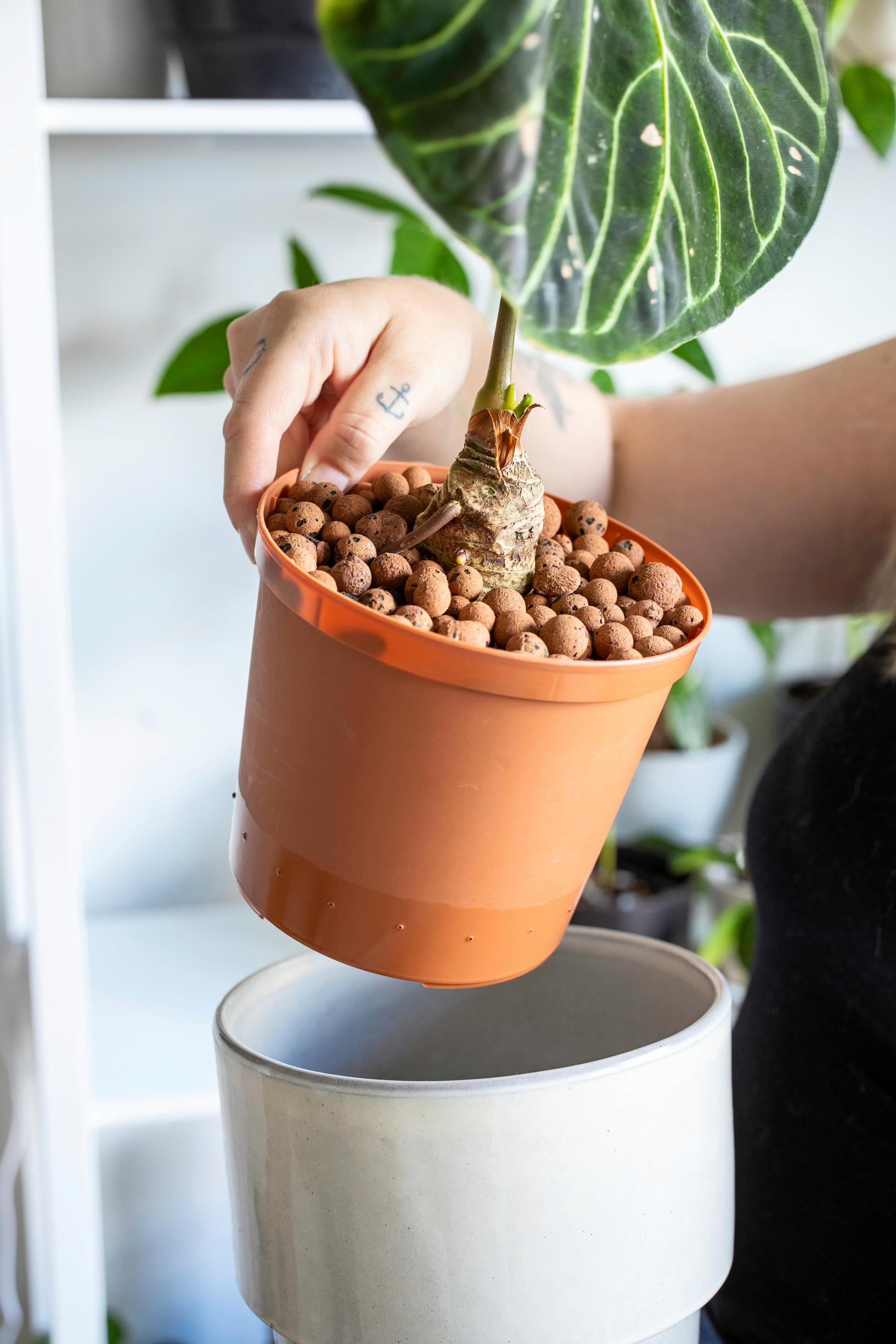
Semi-hydro: grow your houseplants in water and clay pebbles for faster growth
Want to get rid of moldy soil and the hassle of repotting? The popular semi-hydro method, or passive hydroponics, is a method of hydroponic cultivation you can use for most houseplants.
How does hydroponics work?
In hydroponic cultivation, plants absorb nutrients and oxygen from water instead of soil. Instead of soil, the pot is filled with a medium like clay pebbles, which wicks water up to the roots and keeps the plant upright.
What are the benefits of hydroponics?
Hydroponics simplifies watering for houseplants that require consistent moisture and plenty of water. With optimal nutrients and growing conditions, plants grow faster than in soil. You also save time since there’s no need to replace any soil. The inorganic medium retains its structure and doesn’t compact like soil does. Additionally, semi-hydro may be suitable for gardeners with allergies, as organic growing media can cause symptoms.
Is semi-hydro suitable for all plants?
Hydroponics is suitable for most houseplants. However, succulents and other drought-tolerant species should be planted in soil.

With optimal nutrients and growing conditions, plants grow faster than in soil.
Semi-hydro: how to get started
Plant
Root cuttings intended for semi-hydro should be rooted in water. Before planting a standard houseplant into the medium—clay pebbles or clay granules—rinse all soil from its roots.
Container
Plant your houseplant in a container or cachepot designed for hydroponics. You can also use a glass container, although light will promote algae growth.
Medium
Fill the pot with clay pebbles or clay granules, and plant your plants as you would in soil. Thoroughly rinse any dust from the clay pebbles before use. Add water until it covers the medium.
Water
Monitor the moisture of the pebbles or granules with a moisture meter and add water as needed. Clay granules retain water, which extends watering intervals. Clay pebbles do not absorb water at all, so if they dry out, the plant will suffer.
Nutrients
In hydroponics, plants need significantly smaller amounts of nutrients than when growing in soil. Feed your plants with a fertilizer designed for hydroponics, in which the nutrients are in soluble form. Follow the dosage instructions intended for hydroponics. Mineral fertilizers meant for houseplants can also be used in hydroponics, provided the nutrient solution is very dilute. Do not use organic fertilizers in hydroponics, as they promote microbial growth.
Cleaning
Keep the container clean of algae that thrive in standing water and daylight. Clean the pebbles or granules by rinsing them in water once or twice a year. This also helps remove any excess nutrients that may have accumulated in the medium.
Other care
Pruning, misting leaves, and other plant care are still the same as for species planted in soil. Place the plant in a suitable location and provide supplemental lighting in low-light areas.
Expert: Jarno Rantanen from Pavunvarsi


